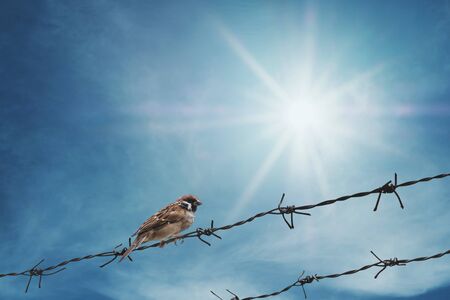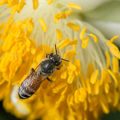Introduction to Garden Birds in the UK
Britain’s gardens are vibrant havens for a diverse array of birdlife, offering a unique opportunity to connect with nature just outside our doors. Among the most commonly spotted garden birds are the robin, blackbird, blue tit, great tit, house sparrow, chaffinch, and wood pigeon. These species have adapted well to suburban and urban environments, making them frequent visitors to feeders and bird tables throughout the country. Supporting local birdlife is not only a delight for keen gardeners and wildlife enthusiasts but is also vital for maintaining healthy ecosystems. Garden birds contribute to pest control, pollination, and seed dispersal, all while enriching our daily lives with their songs and activity. As the seasons shift, so too do the needs and behaviours of these birds. Understanding these changes is crucial for providing effective feeding and housing strategies year-round, ensuring that both resident and migratory species thrive within our shared green spaces.
Seasonal Changes in British Garden Birds
As the seasons transition across the UK, so too do the populations, behaviours, and physical appearances of garden birds. Understanding these seasonal shifts is crucial for anyone aiming to support local birdlife effectively throughout the year. This section explores how bird species composition and behaviour are influenced by Britains distinctive weather patterns and daylight changes.
Spring: The Awakening Season
Spring marks the beginning of nesting activities, with many species returning from migration or emerging from winter shelters. Birds like robins and blue tits become more vocal and territorial as they establish breeding grounds. Plumage often appears brighter, especially in males, as a display for attracting mates. Gardeners may notice increased activity around feeders and nest boxes during this period.
Summer: Breeding and Rearing Young
During summer, gardens resonate with the sound of fledglings begging for food. Adult birds are busy feeding their young, resulting in frequent visits to feeders and water sources. Some species, such as swifts and swallows, are visible only during this time before migrating south. Moulting can also occur towards late summer, temporarily making some birds appear scruffy.
Autumn: Preparation for Migration and Scarcity
Autumn brings about significant changes as migratory birds depart and resident populations prepare for leaner months. There is often an influx of continental visitors such as redwings and fieldfares. Many birds increase their feeding activity to build fat reserves ahead of winter scarcity.
| Season | Key Bird Species | Main Behaviours Observed | Notable Physical Changes |
|---|---|---|---|
| Spring | Robin, Blue Tit, Blackbird | Nesting, Singing, Territory Establishment | Brighter Plumage (Males) |
| Summer | Swift, Swallow, House Sparrow | Feeding Young, Frequent Feeder Visits | Moulting Begins (Late Summer) |
| Autumn | Redwing, Fieldfare, Goldfinch | Migrating/Increased Feeding | No Major Change; Pre-migration Fat Gain |
| Winter | Siskin, Long-tailed Tit, Chaffinch | Flocking, Foraging in Groups | Puffed-up Appearance (for Warmth) |
Winter: Survival Strategies and Social Behaviour
The colder months see garden birds relying heavily on supplementary feeding as natural food sources dwindle. Species that were solitary in warmer months often form flocks for greater protection against predators and harsh conditions. Birds may appear larger due to fluffed-up feathers—a strategy to retain heat during freezing temperatures.
The Importance of Seasonal Awareness for Gardeners
A keen awareness of these seasonal patterns enables gardeners to tailor their feeding routines and housing provisions appropriately. Recognising which species are likely present at different times of year—and how their needs change—ensures your garden remains a sanctuary for wildlife through every season.
![]()
3. Feeding Strategies for Each Season
Adapting your garden bird feeding approach throughout the year is essential for supporting the wellbeing of local bird populations across the UK. Each season brings changes in natural food availability and shifts in birds’ dietary requirements, so tailoring both the types and quantities of food you provide can make a significant difference.
Winter: Sustenance for Survival
During the colder months, natural food sources become scarce and birds expend more energy keeping warm. Offer calorie-rich foods such as suet balls, sunflower hearts, peanuts (unsalted), and fat blocks. Ensure feeders are regularly topped up and consider placing additional feeding stations to reduce competition. It’s also beneficial to provide fresh water daily, preventing it from freezing if possible.
Spring: Supporting Breeding Birds
As breeding season begins, adult birds require extra protein for egg production and chick rearing. Switch to offering mealworms (live or dried), soft fruits, and high-protein seed mixes. Avoid whole peanuts on open trays as these can pose a choking hazard to nestlings; instead, use mesh feeders or crush them finely. Clean feeders frequently to minimise disease transmission at this busy time.
Summer: Supplementing Natural Abundance
With insects, seeds, and berries readily available in summer, supplementary feeding is less critical but still valuable during spells of poor weather or for fledglings learning to forage. Continue providing small amounts of seeds, mealworms, and fruit. Avoid fat-based products during hot spells as they can spoil quickly. Ensure water supplies are maintained for drinking and bathing.
Autumn: Preparing for Colder Months
In autumn, many garden birds focus on building up fat reserves ahead of winter. Gradually increase the quantity of high-energy foods like black sunflower seeds, suet products, and mixed seed blends that appeal to a range of species such as tits, finches, and robins. Scatter some food directly on the ground for ground-feeders like dunnocks and wrens. This seasonal transition period is ideal for cleaning feeders thoroughly before winter sets in.
Choosing UK-Appropriate Foods
Selecting foods familiar to British birds—such as nyjer seed for goldfinches or apples for thrushes—helps attract native species while discouraging invasive ones. Considerations should include regional variations; for example, Scottish gardens may see more siskins who favour sunflower hearts, while southern counties attract more house sparrows with mixed seed blends.
Summary Tips
Adjust both food type and quantity with each season; prioritise hygiene; always offer clean water; and remain observant of which species visit your garden so you can refine your offerings over time.
4. Providing Suitable Housing and Shelter
Ensuring that your garden birds have appropriate shelter is crucial to their health and safety throughout the year. In the UK, the fluctuating weather conditions and changing seasons mean that the requirements for housing and shelter evolve. By selecting, placing, and maintaining the right nest boxes, bird tables, and natural habitats, you can make your garden a sanctuary for various native species.
Nest Boxes: Selection and Placement
Choosing the correct nest box design is fundamental. Different species prefer specific entrance hole sizes and box styles. For example, blue tits thrive in boxes with small holes, while robins favour open-fronted varieties. Placement is equally important—nest boxes should be positioned away from direct sunlight, prevailing winds, and predators such as cats or squirrels. The ideal height varies between 1.5m to 5m depending on the target species.
| Species | Box Type | Entrance Hole Size | Recommended Height |
|---|---|---|---|
| Blue Tit | Standard Nest Box | 25mm | 2–4m |
| Robin | Open-fronted Box | N/A (open front) | 1–2m |
| Sparrow | Terraced Box | 32mm | 2–4m |
| Starling | Larger Box | 45mm | 2–5m |
Maintaining Bird Tables and Feeders Year-Round
Bird tables provide both feeding opportunities and additional shelter during harsh weather. It is important to clean bird tables regularly to prevent disease spread—ideally every two weeks in winter and weekly during warmer months when droppings accumulate faster. In wet British winters, ensure tables are covered or use hanging feeders to keep food dry.
Nurturing Natural Habitats for Shelter
A diverse garden structure with hedgerows, shrubs, dense evergreens, and log piles offers essential cover from predators and inclement weather. Native plants such as hawthorn or holly provide berries in winter and nesting sites in spring. Allowing parts of your garden to remain ‘wild’ through minimal mowing or by leaving leaf litter helps attract insects for fledglings while providing extra insulation.
Adapting to Seasonal Changes in the UK Climate
Spring: Inspect and clean nest boxes before the breeding season begins.
Summer: Offer shaded spaces; ensure water sources do not dry out.
Autumn: Prepare shelters for overwintering; increase natural debris for cover.
Winter: Check roofs on boxes are watertight; clear snow from entrances; top up feeders regularly as natural food becomes scarce.
Catering to seasonal needs by offering reliable shelter options will support thriving bird populations in your garden, whatever the British weather brings.
5. Dealing with Challenges: Predators, Weather, and Pests
Understanding the Key Threats to Garden Birds
Throughout the year, garden birds face a range of challenges in British gardens. These include natural predators such as domestic cats and sparrowhawks, unpredictable weather conditions—from freezing winters to torrential rain—and a host of common pests like squirrels and rats. Successfully supporting local birdlife means recognising these threats and adapting your feeding and housing strategies accordingly.
Protecting Against Predators
Cat-Proofing Your Garden
Domestic cats are one of the most significant dangers to garden birds across the UK. To deter them, position bird feeders at least two metres away from dense shrubs or fences where cats could hide and ambush. Consider installing thorny plants or prickly ground covers beneath feeding stations, and use baffles on feeder poles to prevent climbing.
Deterring Larger Predators
Sparrowhawks and magpies may target smaller birds or nests. Place nest boxes high up (at least three metres) and under eaves or within dense foliage for concealment. Choose boxes with small entrance holes (around 32mm) to restrict access to larger species.
Coping with Extreme British Weather
Winter: Cold and Snow
In harsh winters, provide energy-rich foods such as suet balls, sunflower hearts, and mealworms. Ensure water sources are kept ice-free by floating a ping pong ball in bird baths or using purpose-made heaters. Clean feeders regularly to prevent disease spread during periods when birds congregate more densely.
Summer: Heatwaves and Drought
During hot spells, place water dishes in shaded areas and refill them frequently. Offer fruit or soaked dried mealworms to supplement hydration. Provide extra shade near feeders and nest boxes using temporary screens or strategically placed shrubs.
Managing Common British Garden Pests
Squirrels and Rats
Squirrels can quickly empty feeders meant for birds, while rats may be attracted by food debris. Use squirrel-proof feeders with metal cages and clear up spilled seed daily. Avoid feeding bread or fatty scraps, which can attract rodents. Secure compost bins to reduce alternative food sources.
Wasps and Ants
In late summer, wasps may swarm sugary foods left out for birds. Opt for seed mixes over sweet foods during this period. If ants become an issue around feeders, try using ant moats or petroleum jelly barriers on feeder poles.
Regular Monitoring and Adaptation
The key to protecting garden birds is ongoing vigilance—walk your garden regularly to check for new hazards such as broken nest boxes, standing water that could breed mosquitoes, or signs of predation. Adjust feeding locations seasonally and refresh shelter options as plant cover changes through the year.
Summary: A Proactive Approach
By anticipating challenges from predators, weather, and pests, you can create a safer haven for garden birds all year round in the UK. Practical steps such as thoughtful feeder placement, seasonal food choices, and regular maintenance will help ensure your garden remains a welcoming sanctuary whatever nature throws its way.
6. Encouraging Biodiversity and Sustainable Practices
Promoting biodiversity in your garden is essential for supporting the changing needs of native British birds throughout the year. By adopting sustainable practices and carefully selecting plants and landscaping features, you can create a haven for wildlife that thrives in all seasons. Below are recommendations tailored to the UK context, focusing on planting, landscaping, and eco-friendly approaches that benefit both birds and broader biodiversity.
Planting for Year-Round Support
Native Trees and Shrubs
Incorporate native species such as hawthorn, rowan, holly, elder, and blackthorn. These not only provide shelter but also offer natural food sources through berries and insects attracted to their flowers. Layering vegetation at different heights creates diverse habitats, attracting a variety of bird species across the calendar.
Seasonal Flowering Plants
Choose plants like foxglove, cow parsley, bluebells, and primrose to ensure nectar availability from early spring through late autumn. These attract pollinators, which in turn provide insect food for birds during breeding seasons.
Landscaping with Wildlife in Mind
Ponds and Water Features
A small pond or water dish offers vital drinking and bathing opportunities for birds year-round. Incorporating shallow edges supports safe access for both fledglings and adult birds while benefiting amphibians and insects crucial to the ecosystem.
Natural Shelter and Nesting Sites
Retain dead wood, establish log piles, or allow hedges to grow thickly to provide nesting sites and overwintering spots for insects—key food sources for many garden birds. Avoid excessive tidying; leaving some leaf litter supports ground-feeding species such as robins and blackbirds.
Eco-Friendly Maintenance Practices
Pesticide-Free Gardening
Avoid chemical pesticides and herbicides that can harm both birds directly and the insects they feed upon. Opt for organic alternatives or encourage natural predators like ladybirds to control pests.
Sustainable Resource Use
Use peat-free composts to protect threatened peat bog habitats. Collect rainwater for watering your garden, reducing reliance on mains supply and providing fresher water sources for wildlife.
Promoting Community Involvement
Engage neighbours by sharing seeds from native plants or collaborating on wildlife corridors connecting gardens. Join local conservation groups or participate in nationwide citizen science projects like the RSPB Big Garden Birdwatch to contribute valuable data while fostering a shared commitment to biodiversity.
By embracing these recommendations, UK gardeners can play a pivotal role in supporting native bird populations throughout the changing seasons—ensuring gardens remain vibrant ecosystems where wildlife can flourish sustainably.
7. Conclusion and Additional Resources
Throughout the year, garden birds in the UK experience significant changes in their behaviour, dietary needs, and shelter requirements. By understanding these seasonal shifts, you can provide targeted support to help birds thrive, no matter the weather or time of year. Key points to remember include adjusting feeding strategies with the seasons—providing high-energy foods in winter, protein-rich options during breeding season, and fresh water year-round. Equally important is maintaining clean feeders and nest boxes to prevent disease, as well as offering a variety of housing solutions such as birdhouses and dense shrubbery for protection. To deepen your knowledge and access reliable guidance, consider exploring trusted British resources such as the Royal Society for the Protection of Birds (RSPB), the British Trust for Ornithology (BTO), and local Wildlife Trusts. These organisations offer comprehensive advice, identification guides, and opportunities to participate in citizen science projects like the Big Garden Birdwatch. By staying informed and adapting your approach throughout the year, you can turn your garden into a welcoming haven for Britain’s diverse birdlife.


